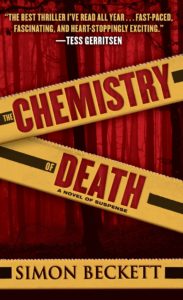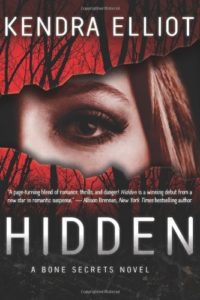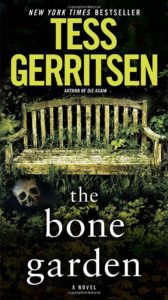Deep in the heart of the Texas Hill Country lies a 26-acre patch of land dotted with oaks, mesquite trees, and the occasional human corpse. Known to locals as the Body Ranch, the Forensic Anthropology Research Facility at Texas State University is home to the largest outdoor decomposition research lab in the world. Since its opening in 2008, the Body Ranch has attracted not just academics, but homicide investigators, news reporters, and fiction writers near and far.
Forensic anthropologists have inspired stories for years. Simply put, these people are bone experts. They are called to the scene when remains can’t be identified by traditional methods because of advanced decomposition. They may also help in cases of fire, drowning, or mass casualty events, such as bombings or plane crashes. Forensic anthropologists work in dirty and sometimes dangerous conditions that would turn most people away. Their work isn’t glamorous, but it is critical, and the clues they unearth in the field or discover under a microscope back at the lab can make the difference between an unsolved murder and a conviction in court.
I visited the Body Ranch while researching a book, and the place lives up to its macabre name. Cadavers are scattered around the property, attracting four-legged scavengers, carrion birds, and insects, all of which are studied closely by scientists and university students. It’s a messy business, but amazingly useful for police detectives who want answers to questions such as time since death (postmortem interval) and whether, for example, a set of bones discovered by a hunter belongs to a human or a deer. Besides studying human remains, staffers at the ranch also give training in bone excavation and body recovery to law enforcement officers from across the country.
Cadavers are scattered around the property, attracting four-legged scavengers, carrion birds, and insects, all of which are studied closely by scientists and university students.The research facility in Texas is modeled after a similar lab in Tennessee, which was made famous by Patricia Cornwell’s novel, The Body Farm. In the bestselling 1994 book, Cornwell’s series heroine, forensic pathologist Kay Scarpetta, visits the Body Farm in Knoxville as she investigates the murder of a child. Scarpetta suspects the murder is the work of an elusive serial killer being hunted by the FBI, and experts at the Body Farm help her with the grisly task of interpreting the evidence. In addition to making the University of Tennessee’s research facility famous, Cornwell’s book helped inspire a new genre of fiction in which the focus is on forensics and no detail is too gruesome to make it onto the page.
With her scalpel-sharp intellect and deep empathy, Cornwell’s Scarpetta is a special character. Her utter respect for the victims who pass through her autopsy suite is part of what makes her such a beloved figure in crime fiction. No matter how horrific the crime or how monstrous the perpetrator, Scarpetta approaches each case with unshakable resolve and a clear moral outlook. She is there to speak for the voiceless and get justice for the dead. And it is her unwavering devotion to doing both, against all odds, that captures the hearts of readers and makes her an unforgettable protagonist.
Perhaps the most famous bone expert in crime fiction is Temperance Brennan, the legendary character created by Kathy Reichs. Like her heroine, Reichs is a board-certified forensic anthropologist who has worked in both North Carolina and Quebec. With a PhD from Northwestern University and years of lab work to her credit, Reichs knows her subject matter well and infuses each of her novels with vivid forensic detail. The Temperance Brennan series caught the interest of millions of readers and inspired the hit television show Bones, which introduced an international audience to the grim but fascinating world of forensic anthropology.
It’s a captivating field. As a fiction writer, I was pulled in from the moment I learned that the Body Ranch was opening near my home in central Texas. With a mixture of curiosity and dread, I set out to learn about the place. After interviewing researchers and visiting the facility, I was impressed by both the people and their mission. The Body Ranch serves as a crossroads where the worlds of science and law enforcement intersect. Inspired by the setting, I created the Delphi Center Crime Lab staffed by an elite group of forensic scientists, known as Tracers, who help homicide cops solve their toughest cases. In this fictional setting, a private endowment allows forensic scientists of all disciplines to use cutting-edge technology to solve crimes—technology that isn’t available in many cash-strapped police departments across the country. So the Tracers series is most definitely fiction. But like the real-life researchers I met at the Body Ranch, the Tracers have a passion for their work and a solemn respect for the dead.
***
An array of authors in recent years have shined the spotlight on forensic anthropology and contributed to a wave of forensic-themed crime fiction. Here is a glimpse:

Kathy Reichs created the famous forensic anthropologist, Dr. Temperance Brennan, in her debut novel Deja Dead. Tempe went on to become the star character of the immensely popular television show Bones. Reichs worked as a producer and consultant on the TV show, which ran for twelve seasons and ended in 2017. The Temperance Brennan series is at now at sixteen books and counting, and Reichs has also co-written a young adult series with Brendan Reichs, her son.

Jefferson Bass is the pen name for the writing duo of Bill Bass and Jon Jefferson, who created the New York Times bestselling Body Farm series, starting with Carved in Bone. Dr. Bill Bass, a world-renowned forensic anthropologist, founded the Body Farm in Tennessee. Bass lends his scientific expertise to the projects, while Jon Jefferson, an accomplished journalist and filmmaker, pens the prose. In Carved in Bone, Dr. Bill Brockton (who shares the same initials as Bass) investigates the case of a mummified corpse discovered inside a cave in the mountains of eastern Tennessee. Jefferson and Bass have collaborated on ten novels, as well as the non-fiction books Death’s Acre and Beyond the Body Farm.

Simon Beckett is a British journalist and crime writer whose series featuring forensic anthropologist Dr. David Hunter has sold more than 10 million novels worldwide. The first book in the series, The Chemistry of Death, shows a forensic anthropologist who is struggling to overcome a personal tragedy when he gets pulled into the investigation of a bizarre murder in Norfolk, England. The Chemistry of Death was shortlisted for the 2006 Gold Dagger Award.

Kendra Elliot is the #1 Amazon bestselling author of the “Bone Secrets” series. The first book, Hidden, follows forensic odontologist Lacey Campbell, who works with the Oregon medical examiner to investigate unidentified teeth and bones. Elliot draws on her many years of experience in the dental field to seamlessly blend scientific details into her story. In Hidden, Lacey gets summoned to help police investigating the case of a sadistic serial killer and ends up becoming a target herself. Elliot’s popular Bone Secrets series includes five novels and a short story.

Best known for her “Rizzoli & Isles” series, author Tess Gerritsen earned a degree in anthropology from Stanford University and went on to become an MD. While on maternity leave from her work, she began writing suspense novels and soon found her niche with medical thrillers. Gerritsen’s Rizzoli & Isles books, featuring police detective Jane Rizzoli and medical examiner Maura Isles, inspired the TV series starring Angie Harmon and Sasha Alexander. Gerritsen’s novel, The Bone Garden, set in both the 1830s and present day, begins when a skull is unearthed at a home in rural Massachusetts.

















